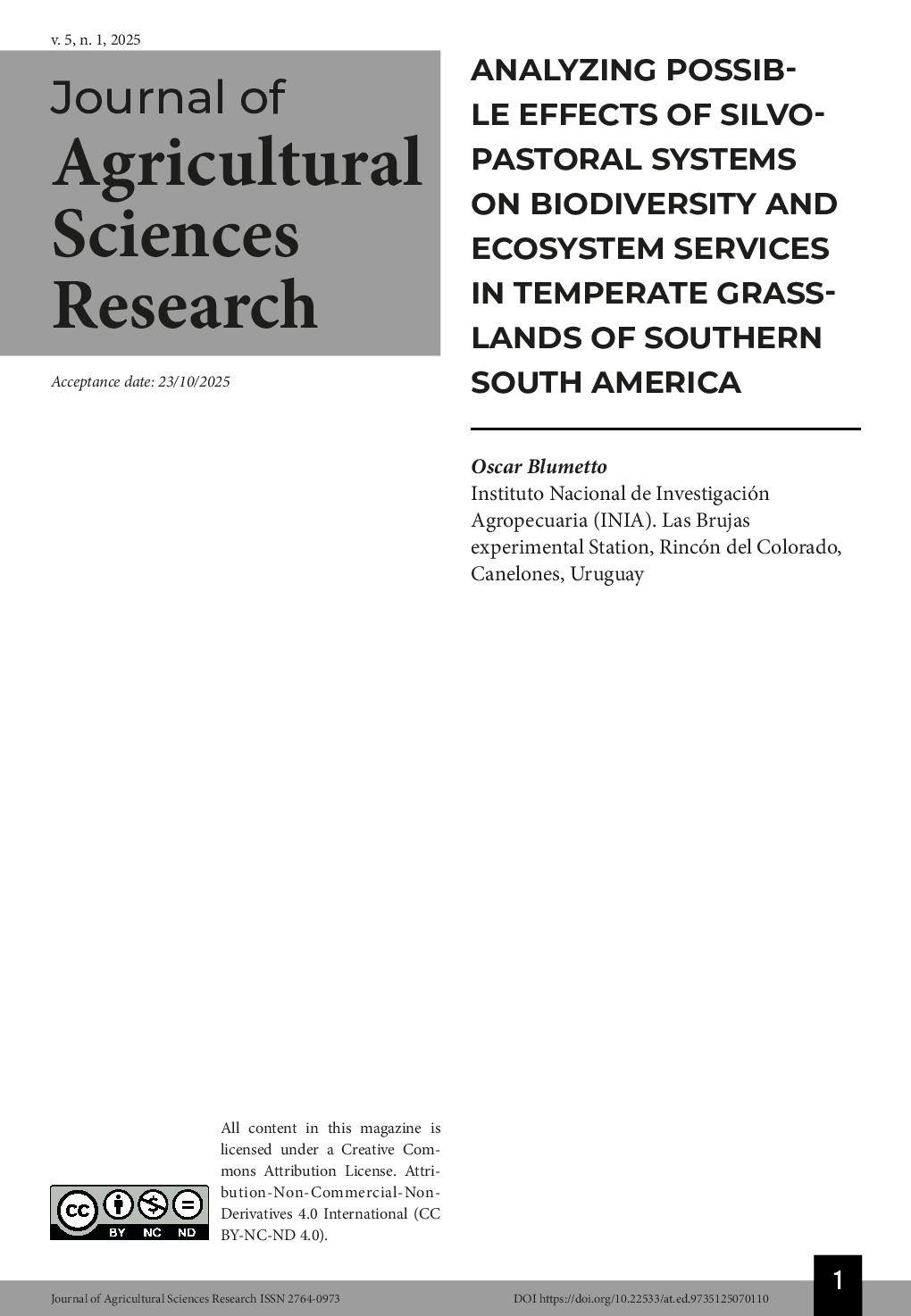ABSTRACT.- Silvopastoral systems (SPS), beyond their productive potential, have been promoted as a strategy for carbon sequestration and contribute to the conservation of biodiversity. The review carried out shows that when it comes to the implementation of these systems in tropical regions, especially where agricultural or livestock activity has displaced natural vegetation, the effects are positive in terms of carbon sequestration, biodiversity, hydrological dynamics and water quality. In subtropical and temperate regions, SPS may be an environment friendly option in those bioregions where natural vegetation is dominated by open woody communities and grasslands, by the association of well managed grazing livestock. In regions where the natural vegetation is grasslands, there is few information obtained in SSP, for which some information derived from forest systems was analyzed. The scant evidence shows that carbon sequestration could be a reality if soil carbon and aerial biomass are added, but it could alter water dynamics and affect the biodiversity of flora and fauna. .-.-.--.-.-.-.-.-.-.-.-.RESUMO.- Os sistemas silvipastorais (SPS), além do seu potencial produtivo, têm sido promovidos como estratégia de sequestro de carbono e contribuem para a conservação da biodiversidade. A revisão efectuada mostra que quando se trata da implementação destes sistemas em regiões tropicais, especialmente onde a actividade agrícola ou pecuária deslocou a vegetação natural, os efeitos são positivos em termos de sequestro de carbono, biodiversidade, dinâmica hidrológica e qualidade da água. Nas regiões subtropicais e temperadas, o SPS pode ser uma opção amiga do ambiente nas bio-regiões onde a vegetação natural é dominada por comunidades lenhosas abertas e pastagens, pela associação de gado pastoreio bem gerido. Em regiões onde a vegetação natural é pastagem, há poucas informações obtidas no SSP, para as quais foram analisadas algumas informações derivadas de sistemas florestais. As escassas evidências mostram que o sequestro de carbono poderia ser uma realidade se fossem adicionados carbono do solo e biomassa aérea, mas poderia alterar a dinâmica da água e afectar a biodiversidade da flora e da fauna.

